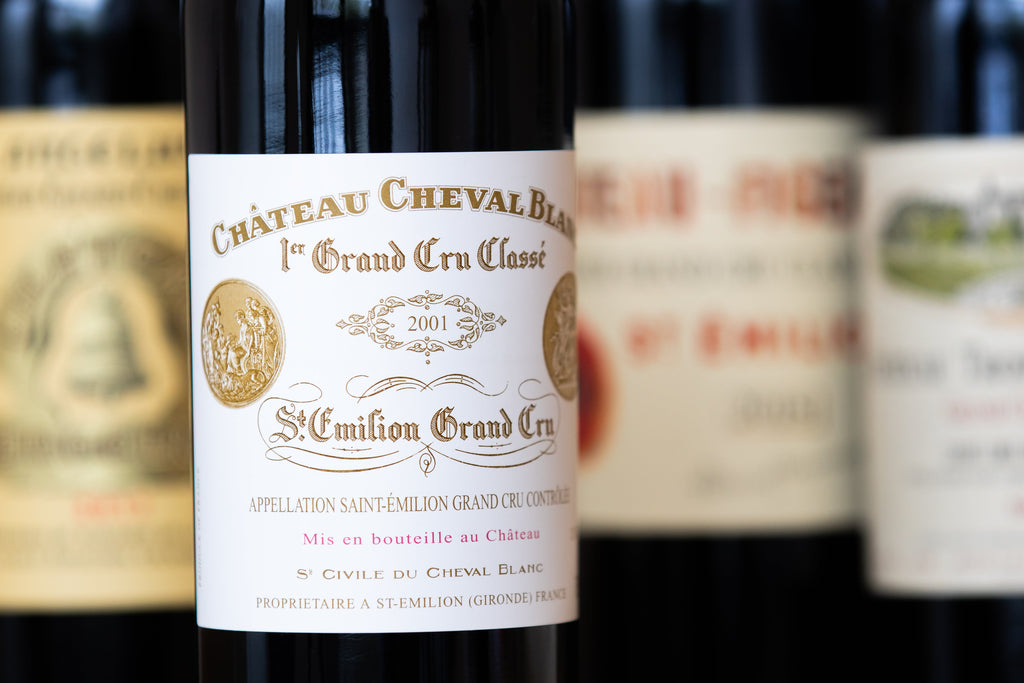Wine Bottle Sizes Explained: From Piccolo to Nebuchadnezzar

When it comes to wine, size does matter — especially when you're talking about wine bottles. From the compact piccolo to the party-starting Nebuchadnezzar, each wine bottle size carries not only a different volume but also a different purpose, aging potential, and aesthetic.
Whether you’re planning a dinner for two or a celebration for fifty, understanding wine bottle formats can help you choose the perfect size for any occasion. In this blog, we break down every major wine bottle size — what it holds, why it matters, and which format might be right for your next bottle.
Why Do Wine Bottle Sizes Vary?
Wine bottle sizes evolved over centuries, influenced by tradition, practicality, and even international trade. While the standard 750ml bottle dominates shelves today, larger (and smaller) formats offer both stylistic and functional advantages.
But why 750ml — and not 1 liter or 500ml?
The 750ml wine bottle became the global standard due to a mix of historical convention and trade logistics:
- Lung power of glassblowers: Before industrial bottling, wine bottles were made by hand. The average glassblower could blow a bottle holding around 700–800 ml in a single breath — and 750 ml became the practical sweet spot.
- Ease of transport: In the 18th and 19th centuries, wine exports from France (especially Bordeaux) to England were common. The English measured wine in imperial gallons (1 gallon ≈ 4.5 liters). A case of 12 bottles of 750ml equaled exactly 9 liters, or 2 imperial gallons, making it simple for merchants to calculate duties and organize shipments.
- Aging and serving size: 750ml turned out to be an ideal volume for aging and serving — holding roughly five to six glasses of wine, perfect for sharing at a meal.
Today, 750ml is the legal standard in most wine-producing countries and the default format for almost all still and sparkling wines.
Other reasons bottle size matters:
- Aging potential: Larger bottles age more slowly and gracefully.
- Occasions: Big formats are ideal for celebrations, while half-bottles are perfect for solo pours or pairing dinners.
- Presentation: Magnum bottles and beyond make a statement — and often become collector’s items.
- Practicality: Some sizes offer better value or convenience for specific wine styles (e.g. dessert wines or Champagne).
Aging and Wine Bottle Size: Bigger Is Better?
One of the most important differences between wine bottle sizes is how the wine evolves over time. Larger formats tend to age more slowly and retain their freshness longer, making them ideal for serious collectors and special vintages.
This slower aging process is mainly due to the ratio of wine to oxygen. When a wine bottle is sealed with a cork, a tiny amount of oxygen enters the bottle over time — a natural and essential part of how wine matures. However, because the neck and cork size stay relatively consistent across bottle formats, larger bottles contain significantly more wine in proportion to the amount of oxygen exposure. As a result, wines in magnums, Jeroboams, or even Methuselahs evolve more gradually and evenly than their counterparts in standard 750ml bottles.
This slower evolution not only preserves the fruit and structure of the wine but also allows complex aromas to develop over a longer period. For collectors aiming to cellar wines for a decade or more, large-format bottles offer better longevity, more stable aging, and often a more refined drinking experience when the wine is finally opened.
The Origin of Wine Bottle Names: Kings, Myths, and Magnificence
Ever wondered why wine bottles have such grand, almost mythical names? Jeroboam, Methuselah, Salmanazar — they sound more like ancient rulers than wine vessels. That’s no coincidence.
Many of the large-format wine bottle names are borrowed from biblical and historical figures, mostly kings of ancient Israel and Mesopotamia. The tradition is believed to have started in 18th- and 19th-century France, especially in Champagne, where producers wanted to emphasize the grandeur and longevity of their most prestigious wines.
Here’s a brief look at the names behind the bottles:
- Jeroboam (3–5L) – The first king of the northern Kingdom of Israel after the division of Solomon’s empire. The name implies authority and boldness.
- Rehoboam (4.5L) – Son of Solomon and king of Judah. Used exclusively in Champagne, the bottle echoes his regal status.
- Methuselah (6L) – A biblical patriarch who lived 969 years — fitting for a bottle designed to age gracefully over time.
- Salmanazar (9L) – A powerful Assyrian king. His name suggests scale and might, perfect for a bottle that holds a full case of wine.
- Balthazar (12L) – Traditionally one of the Three Wise Men (Magi). In wine terms, a bottle this large is indeed a gift.
- Nebuchadnezzar (15L) – The mighty king of Babylon, remembered for grandeur and legacy. In wine, it’s the ultimate showstopper bottle.
Wine Bottle Sizes Chart
Here’s a complete breakdown of the most common wine bottle formats, from smallest to largest:
|
Bottle Name |
Volume (L) |
Equivalent to |
Approx. Glasses |
|
Piccolo / Split |
0.1875 L |
1/4 standard bottle |
1 glass |
|
Half Bottle |
0.375 L |
1/2 standard bottle |
2–3 glasses |
|
Standard Bottle |
0.75 L |
– |
5–6 glasses |
|
Magnum |
1.5 L |
2 standard bottles |
10–12 glasses |
|
Jeroboam |
3.0 L (still) / 3.0–4.5 L (sparkling) |
4 bottles |
20–24 glasses |
|
Rehoboam |
4.5 L (sparkling only) |
6 bottles |
30–36 glasses |
|
Methuselah |
6.0 L |
8 bottles |
40–48 glasses |
|
Salmanazar |
9.0 L |
12 bottles |
60–72 glasses |
|
Balthazar |
12.0 L |
16 bottles |
80–96 glasses |
|
Nebuchadnezzar |
15.0 L |
20 bottles |
100–120 glasses |
The Origin of Wine Bottle Names: Kings, Myths, and Magnificence
Ever wondered why wine bottles have such grand, almost mythical names? Jeroboam, Methuselah, Salmanazar — they sound more like ancient rulers than wine vessels. That’s no coincidence.
Many of the large-format wine bottle names are borrowed from biblical and historical figures, mostly kings of ancient Israel and Mesopotamia. The tradition is believed to have started in 18th- and 19th-century France, especially in Champagne, where producers wanted to emphasize the grandeur and longevity of their most prestigious wines.
Are Large Wine and Champagne Bottle Names the Same?
Mostly, yes — but with a few notable exceptions. While both still wine and Champagne use biblical names for large bottles, some formats have different names depending on the type of wine, particularly in the 3L to 6L range.
Key Differences:
|
Volume |
Still Wine Name |
Champagne Name |
|
|
3.0 L |
Jeroboam |
Jeroboam |
|
|
4.5 L |
(Rarely used) |
Rehoboam |
|
|
6.0 L |
Imperial / Methuselah |
Methuselah |
|
Details:
- Jeroboam (3L) is used for both still wine and Champagne, but the actual bottle shape differs:
- In Champagne, the Jeroboam is shaped like a traditional Champagne bottle.
- In Bordeaux-style wines, the Jeroboam resembles two magnums side by side.
- Rehoboam (4.5L) is used only in Champagne. It’s rare to find this format in still wine, where producers often skip from 3L to 6L.
- Imperial vs. Methuselah (6L):
- In still Bordeaux wine, the 6L format is often called an Imperial.
- In Champagne, it’s called a Methuselah.
Our Large Format Collection at Total Grand Cru
At Total Grand Cru, we carry a curated selection of large-format wines — from expressive magnums to ultra-rare bottles like Methuselahs and beyond. Whether you’re celebrating a milestone, building your cellar, or simply want to experience wine at its best, there’s a bottle (and a size) for you.
Explore our magnums and larger formats here




